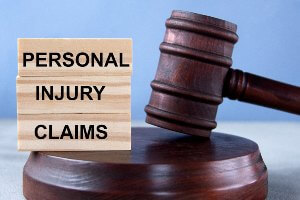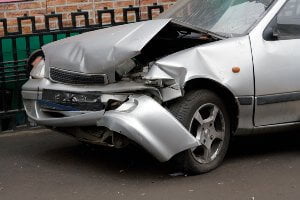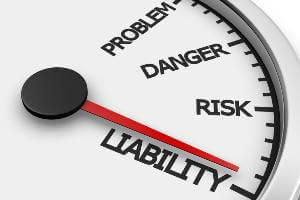Understanding Causation in Minnesota Personal Injury Claims
 Causation is a central aspect of a personal injury case. Causation connects an injury to the actions of another person, such as a driver or property owner.
Causation is a central aspect of a personal injury case. Causation connects an injury to the actions of another person, such as a driver or property owner.
In this blog, the experienced lawyers at TSR Injury Law provide a detailed explanation of this legal concept. We also discuss the challenges of proving causation and the evidence that can be used to support a personal injury claim.
At TSR Injury Law, we have been advocating for Minnesota injury victims for more than 25 years. During that time, we have obtained more than $1 billion in compensation over a wide variety of cases. Our knowledgeable Minneapolis personal injury lawyers represent clients on contingency, which means no upfront costs for you.
Schedule a free legal consultation to learn if you have a case. Call (612) TSR-TIME.
What Is Causation in Personal Injury Law?
Causation in personal injury law refers to the link between someone’s actions and another person’s injury. Essentially, one person breached a duty of care, and the breach resulted in an injury to another. A duty of care is a legal responsibility to take reasonable steps or precautions to prevent an injury to someone else.
Establishing this connection is crucial for a successful personal injury claim. You can think of causation as the linchpin of a personal injury claim, without it, there is no case. There needs to be an unbroken chain between the actions of the at-fault party and your injuries.
What Are the Two Elements of Causation?
Causation has two parts: cause in fact and proximate cause. This is sort of like a two-part test for establishing whether causation exists in an injury claim:
- Cause in fact: This can be referred to as the “but for” test. In other words, your injuries would not have happened without the actions of the defendant. For example, say that a pedestrian got hit by a car whose driver ran a red light. The crash would not have happened if the driver had not run a red light. The driver’s actions were the direct cause in fact of the pedestrian’s injuries. One of the challenges of proving cause in fact is being able to counter if the insurance company tries to argue that something else likely caused your injuries.
- Proximate cause: Proximate cause is about foreseeability. It determines whether the injuries were a foreseeable result of the negligent action. For instance, if a property owner neglects to clear ice from their sidewalk and someone slips and gets injured, the owner’s negligence is the proximate cause of the injury. Foreseeability is based on the reasonable person standard. That means if a reasonable person could have expected his or her actions would result in harm, the injury was foreseeable. For example, it is reasonably foreseeable that and result in injuries.
Evidence That Can Be Used to Prove Causation
Proving causation requires concrete evidence. This might include:
- Medical records: This documentation is pivotal in linking the injury directly to the accident. Detailed medical records also provide your diagnosis, a timeline of your treatment and explain the severity of your injuries.
- Expert testimony: Experts can help establish the cause-and-effect relationship between the defendant’s actions and your injuries. They use their advanced knowledge and experience to provide detailed insight into what occurred. For example, medical experts can explain exactly how a crash caused an injury.
- Accident reconstruction: Sometimes, reconstructing a crash can provide a clearer picture of how the events unfolded and led to the injury. Accident reconstruction experts can provide a visual and scientific explanation of what happened in the collision. They can explain the chain of events, including how the other party’s negligence led to your injuries.
At TSR Injury Law, we understand the complexities of proving causation in personal injury cases. Our lawyers and legal staff are adept at gathering convincing evidence for a variety of cases. We also know how to counter the liable insurance company’s arguments about what caused your injuries or whether a reasonable person could have foreseen what would happen.
Contact TSR Injury Law for Post-Injury Legal Help
Causation is a critical element of personal injury claims, and understanding it is key to securing fair compensation.
If you are an injured victim in Minneapolis, reach out to TSR Injury Law. Our experienced lawyers and legal team are here to answer your questions and guide you through the legal process. We are committed to securing the justice and compensation injury victims need.
We do not charge any upfront fees for our services. The initial legal consultation is always free.
More than $1 billion recovered. Call today: (612) TSR-TIME.


 A head-on collision is one of the most dangerous types of car crashes, as those involved are at much higher risk for severe or even fatal injuries.
A head-on collision is one of the most dangerous types of car crashes, as those involved are at much higher risk for severe or even fatal injuries. Loss of consortium is something you may be able to claim if your spouse suffered a catastrophic or fatal injury caused by another’s negligence. Loss of consortium refers to the loss of your spouse’s companionship, affection, support and guidance, help with household chores and more. In other words, your spouse cannot provide what they did before the injury or death.
Loss of consortium is something you may be able to claim if your spouse suffered a catastrophic or fatal injury caused by another’s negligence. Loss of consortium refers to the loss of your spouse’s companionship, affection, support and guidance, help with household chores and more. In other words, your spouse cannot provide what they did before the injury or death. When attorneys try to determine if someone is liable for an injury, they assess whether the party acted reasonably or unreasonably in the situation that resulted in an injury. If this person failed to act as a reasonable person would have in the same situation, he or she may be liable for damages suffered by the victim.
When attorneys try to determine if someone is liable for an injury, they assess whether the party acted reasonably or unreasonably in the situation that resulted in an injury. If this person failed to act as a reasonable person would have in the same situation, he or she may be liable for damages suffered by the victim.